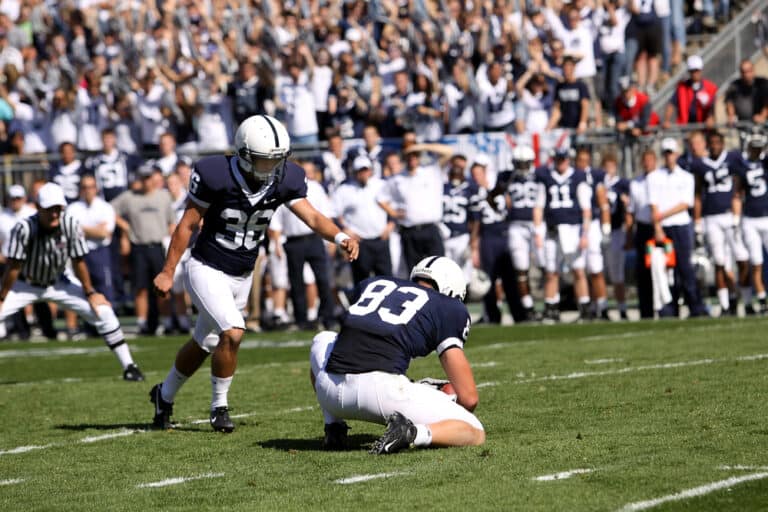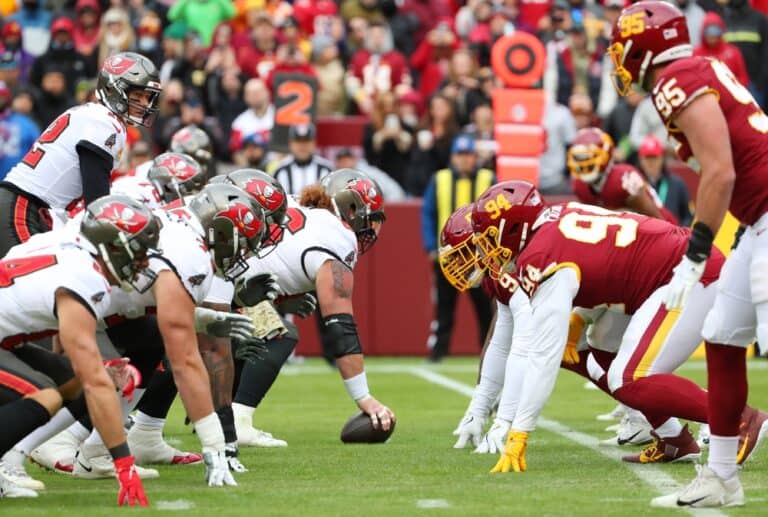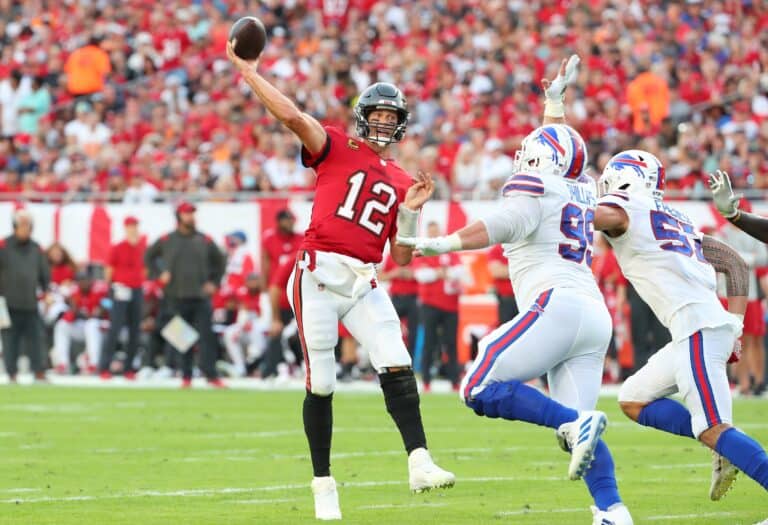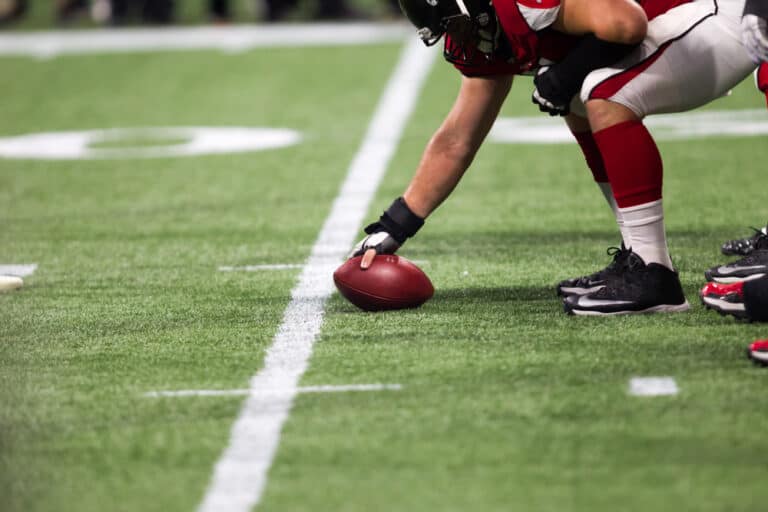How Do They Clear Snow From A Football Field? (Find Out Here)
Snow has always played a big role in certain football fields. With the regular season starting in September and ending in January, some football fields are subject to various weather conditions. Fields like the Lambeau Field in Green Bay, Orchard Park in New York, and Chicago’s Soldier Field are constantly affected by snowstorms, and clearing the snow from these fields is quite the task.
Hydronic radiant heating systems, snow blowers, tarp rain covers, and snow plowing are different ways to clear and keep snow from a football field. Football field maintenance requires constant attention and planning against damage due to snowstorms.
No matter the weather, football season always continues, and over the years, football groundkeepers have implemented preventative measures to help keep snow on the field to a minimum. Some football stadiums have invested in state-of-the-art equipment to clear snow from football fields, but others still struggle the old fashion way. Here are the different ways snow is cleared from football fields.
How To Clear Snow From A Football Field
Battling the harsh snow conditions in places like Wisconsin and New York has led to innovative solutions to combat excessive snow on football fields. The hard part of clearing snow from a football field is to do so without damaging the field. Groundkeepers are under a lot of pressure to prepare the football field for the football season, and snow is one of the hardest to control.
Some football fields still use old methods like tarps and plowing to clear snow, but technology and innovative solutions have found other methods to combat heavy snow on football fields. Here are four ways to clear snow from a football field:
Football Tarp And Rain Covers
For years rain tarp covers have been the cheapest and easiest remedy for snow. Normally if the weather turns and heavy rainfall covers the field, a tarp rain cover is pulled over the field to prevent excessive water. The tarp cover would keep the field dry enough for games to continue.
Because it works so well for rain, groundkeepers cover the football field with the tarp when heavy snow comes down. Not only does the tarp prevent, to a large extent, the field from becoming muddy and drenched with water, but it is also easier to get the snow off without damaging the field.
Worth mentioning is that there are different tarps for football fields. Some tarp covers prevent the grass from being burned by the sun but still leave enough perforation to let water through. These tarps are not used for snow.
Specifically designed tarp covers prevent water from penetrating the football field. Tarp covers made from highly impenetrable materials like reinforced polyethylene or polypropylene contribute to higher durability.
The snow accumulates on the tarp cover, and snow blowers or snow shovels are used to remove the snow from the tarp. After the snow is removed, the tarp cover is taken off to reveal a dry and ready football field.
Snow Blowers
Snow blowers have been around for a long time and, for many years, have been the remedy to clear snow from a football field. The snow blower is a two- or three-stage blower; some can easily and accurately blow snow up to 50 feet.
There are a variety of snow blower sizes, and football groundkeepers use these machines with great care. The bigger the snow blower, the faster snow is removed, but groundkeepers also consider the weight to avoid damage to the field. Snow blowers work well if there is a tarp cover to protect the field, but some football fields do not have tarp covers, and the snow blower is carefully worked across the field.
Snow Plowing
Snow plowing is the method least used to remove snow from football fields, and for a good reason. Snow plowing is taking a vehicle, attaching a scoop or scraper, and pushing the snow off the field. Plowing is a rough way to get rid of snow, and the chances of damage to the football field are a near certainty.
The first problem is that snow leaves the field wet, and the vehicle’s tires will run deep grooves in the field. The vehicle’s weight will also damage the grass, causing it to take a while to recover, not to mention that groundkeepers will have to level the field and fill grooves. The plow must be precise, and lowering it too much will rip out the grass, and not lowering it enough will leave snow behind.
Snow plows are not all bad; there are snow plows designed with special tires that cause minimum damage to football fields. These snow plows work great, but some stadiums, especially NFL stadiums, expect perfect playing fields for the pro teams.
Hydronic radiant heating systems
To combat snow on their football field, the Green Bay Packers’ Lambeau Field was the first to install a hydronic radiant heating system. Each groundkeeper has a personal preference, and the Green Bay Packers’ hydronic radiant heating system operates at 38⁰. The grass gets tougher at the ideal temperature, yet it still provides the optimum playing surface for the athletes.
Hydronic radiant heating uses pipes made of polyethylene six inches in diameter. Due to boilers that circulate a mixture of water and glycol that prevents the liquid from freezing, the system remains warm even in extremely cold temperatures. As the warmth is diffused, the temperature of the turf steadily rises, melting any snow or ice that may have collected there.
While many football stadiums in cold climates use these systems, each groundkeeper employs a different technique depending on what it has grown to expect from its region’s winters.

Conclusion
Football fields can be cleared and kept snow-free using various techniques, including snow blowers, tarp rain coverings, plowing, and hydronic radiant heating systems. Maintaining a football field involves ongoing care from groundkeepers and preparation for snow-related damage. Technology has changed how snow is cleared from football fields, and the Green Bay Packers’ Lambeau Field is proof of it.
References
- https://sturf.lib.msu.edu/article/2013jan22b.pdf
- https://www.youtube.com/watch?v=OEDtbGNPo98
- https://extension.psu.edu/snow-removal-from-synthetic-in-filled-systems
- https://eu.jsonline.com/story/weather/2022/09/09/green-bay-packers-lambeau-field-coldest-stadium-nfl-among-windiest-snowiest/8022249001/






